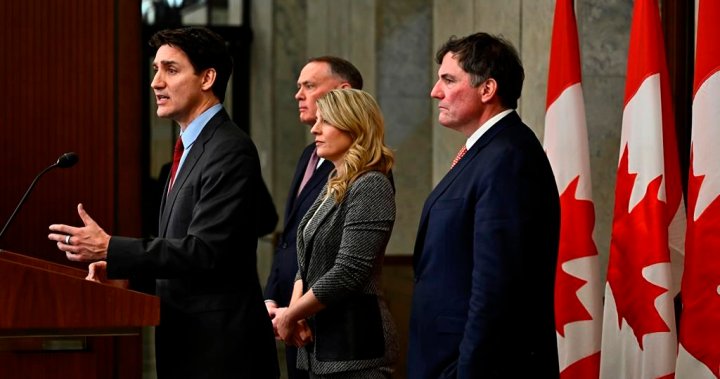The long-simmering trade tensions between Canada and the United States have escalated into a full-blown tariff war. The catalyst for this escalation was President Donald Trump’s decision to impose tariffs on Canadian goods entering the US market. Effective immediately, a 25% tariff will be applied to a wide range of Canadian products, while Canadian energy exports will face a slightly lower 10% tariff. This action represents a significant escalation in the trade dispute between the two countries and marks a departure from the historically close economic relationship they have enjoyed.
In a swift and decisive response, Canadian Prime Minister Justin Trudeau announced retaliatory tariffs on US$155 billion worth of American goods entering Canada. These tariffs, mirroring the 25% rate imposed by the US, will target a diverse range of American products, from consumer goods like orange juice to durable goods such as household appliances. Finance Minister Dominic LeBlanc emphasized that Canada’s objective is not to escalate the conflict but to respond proportionally to the tariffs imposed by the US. He underscored that the 25% rate was not Canada’s choice, but the rate set by the US administration.
The implementation of Canadian tariffs will be phased. The initial phase, effective immediately, will target US$30 billion worth of American consumer products. The Canadian government has carefully selected these products, focusing on those for which Canadian consumers have readily available non-American alternatives. This strategic approach aims to minimize the impact on Canadian consumers while applying pressure on American producers. The government’s message to consumers is clear: if you’re considering buying a US-made washing machine, explore alternatives made in Korea or Europe.
The subsequent phase of Canadian tariffs will encompass an additional US$125 billion worth of American goods, including passenger vehicles, beef, pork, and dairy products. This phase will be implemented following a 21-day public consultation period and further negotiations between Ottawa and Washington. This staged approach allows for continued dialogue and the possibility of de-escalation, while also demonstrating Canada’s resolve to defend its economic interests.
A notable aspect of this escalating trade war is the lack of direct communication between President Trump and Prime Minister Trudeau. Finance Minister LeBlanc confirmed that discussions have taken place between various ministers but not between the two heads of state. While LeBlanc refrained from directly blaming the White House for this lack of communication, he pointedly suggested that they might be able to explain why a call between the leaders hasn’t been scheduled. This absence of direct dialogue between the two leaders underscores the strained relationship and adds to the complexity of resolving the trade dispute.
Despite the current impasse, the Canadian government remains optimistic about the possibility of a resolution. Minister LeBlanc expressed his belief that the American administration will eventually recognize that continuing this trade war is not in their economic interest. This optimism is based on the understanding that the deeply integrated economies of Canada and the US are mutually beneficial, and a prolonged trade war will ultimately harm both countries. While the path forward remains uncertain, Canada maintains its hope that reason will prevail, and a mutually beneficial resolution can be reached. The phased approach to tariff implementation provides a window of opportunity for further negotiations and a potential de-escalation of the current trade conflict.

